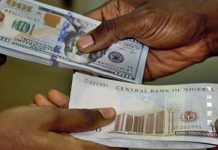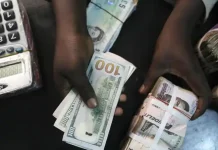The United States of America dollar settles below a seven-week high on Thursday, October 5,as investors consolidated positions though the economic outlook kept sterling and the Australian dollar under pressure.
The dollar’s index against a group of six major currencies edged 0.1 percent higher to 93.55. It hit a seven-week high of 93.92 on Tuesday.
While the dollar has gained almost 3 percent over the last month against a basket of currencies, thanks to a raft of supportive news ranging from robust data to potential U.S. tax reforms, analysts say gains have been too meagre and there is more room for gains.
“The main reason we think there’s a chance we will continue to see a dollar recovery is that the market is too soft when it comes to expectations,” said Richard Falkenhall, a senior currency strategist at SEB in Stockholm.
Expectations of higher interest rates in the United States are more muted than other developed markets despite strong economic data.
For example, markets have assigned a 40 percent probability of two U.S. rate increases over the next year while futures markets are predicting the same quantum of hikes over the next six months in Britain, pricing that is at odds with the overall health of the economy.
“The two powerful forces that have emerged – expectation of a Fed hike at the end of the year and European political challenges – appear to have reached a tentative equilibrium,” said Marc Chandler, global head of currency strategy at Brown Brothers Harriman in New York.
Despite the tiny ranges in broad currency markets, sterling and the Australian dollar were the standout losers with the former being weighed down by political uncertainty and the latter by soft retail sales numbers and growing signs of softness in commodity markets.
Euro trading was becalmed before ECB minutes of the European Central Bank’s September policy meeting due at 1130 GMT. It edged lower to $1.1742.
The ECB signalled at the meeting that while it could announce a plan this month for a gradual exit from its very easy monetary policy, it was in no hurry to end it.
The euro zone’s central bank also mentioned the potentially negative aspects of a strong euro at the September policy meeting, so markets will look closely at the minutes to gauge what was discussed about the currency.
Viraj Patel, an FX strategist at ING Bank in London, said any language on discussions leaning towards acceptance of a stronger euro under certain macro conditions could be a huge boost for the currency.















